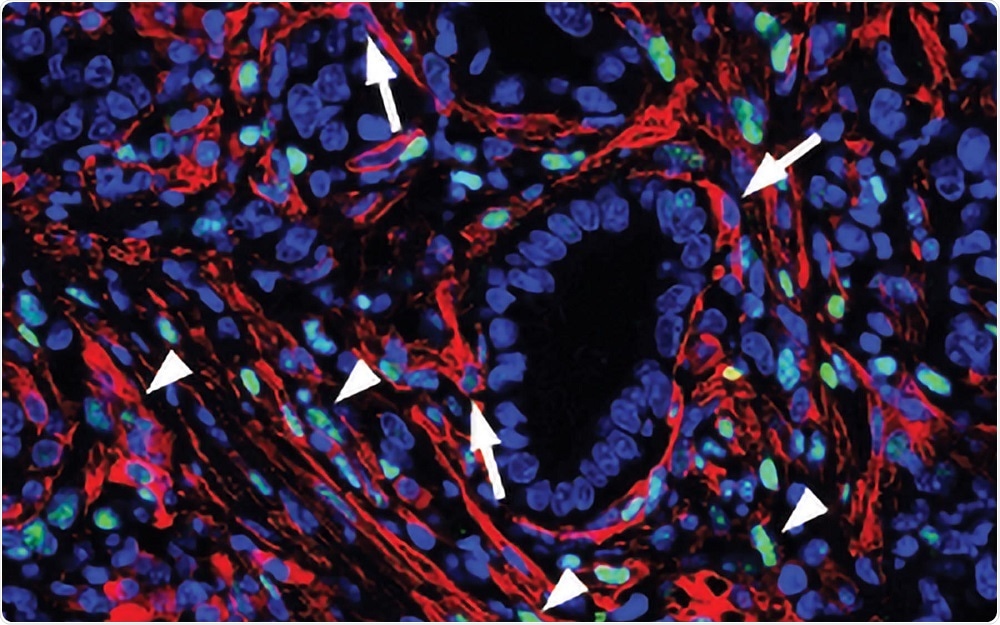
Molecular breakthrough may improve prognosis for pancreatic cancer
Scientists at Cold Spring Harbor Laboratory (CSHL) have discovered a method by which fibroblasts surrounding pancreatic cancer cells can be reprogrammed to suppress, rather than promote, tumor cell growth.
 Image Credit: CSHL, 2018
Image Credit: CSHL, 2018The research was published today in the journal Cancer Discovery, and details a signaling pathway in pancreatic tumors that could help them to recruit tumor-suppressive cells in the fight against cancer.
Pancreatic cancer usually has a very grim prognosis.
These tumors are typically diagnosed at an advanced stage and do not respond well to chemotherapy. In fact, most patients die within six months of diagnosis.
A major reason for the poor response to chemotherapy is the stroma, a protective connective tissue that comprises almost 90% of the pancreatic tumor mass. The stroma contains an abundance of non-cancerous cells, surrounded by the fibrous connective tissue protein they produce.
Last year, the scientists discovered that this stroma contains numerous fibroblasts, of which there are at least two types.
One type of fibroblast produces stromal connective tissue that blocks the action of chemotherapeutic drugs and secretes molecular growth signals that enhance tumor growth. Moreover, they inhibit immune cells trying to target and kill the cancer cells.
However, the second type of fibroblast prevents active tumor growth.
These cell types are not fixed; the first type can be converted to the second and vice versa, depending on the signals that the fibroblasts in the tumor receive from the cancer cells and from other elements of the surrounding stroma.
In the latest study, Biffi, and colleagues identified the exact molecules that modulate fibroblast attributes within the tumor.
One such molecular signal is IL-1, which pushes fibroblasts to become tumor promoters.
However, another signal called TGF-beta supersedes the IL-1 molecule to maintain fibroblasts in a state which could oppose tumor growth - even when both molecules are present in the stroma.
The discovery suggests it is now possible to use cell signaling molecules to force cancer-promoting fibroblasts into the cancer-suppressing phenotype.
This is in sharp contrast to earlier treatments which were directed only at reducing the burden of tumor cells in the body.
Research is now focused on understanding the effect of altering the secretion of IL-1 and TGF-beta and thus converting tumor-promoting fibroblasts to tumor-restraining ones – how does the cancer respond?
Another area being explored is the result of targeting these molecules by specific drugs, in combination with standard chemotherapy or immunotherapies against the cancer cells.
It is likely that the most successful therapy will eventually combine several of these approaches, directed at killing as many cancer cells as possible while also aimed at eliminating those elements of the stroma around the tumor that promote tumor growth.






















.jpg)










No hay comentarios:
Publicar un comentario